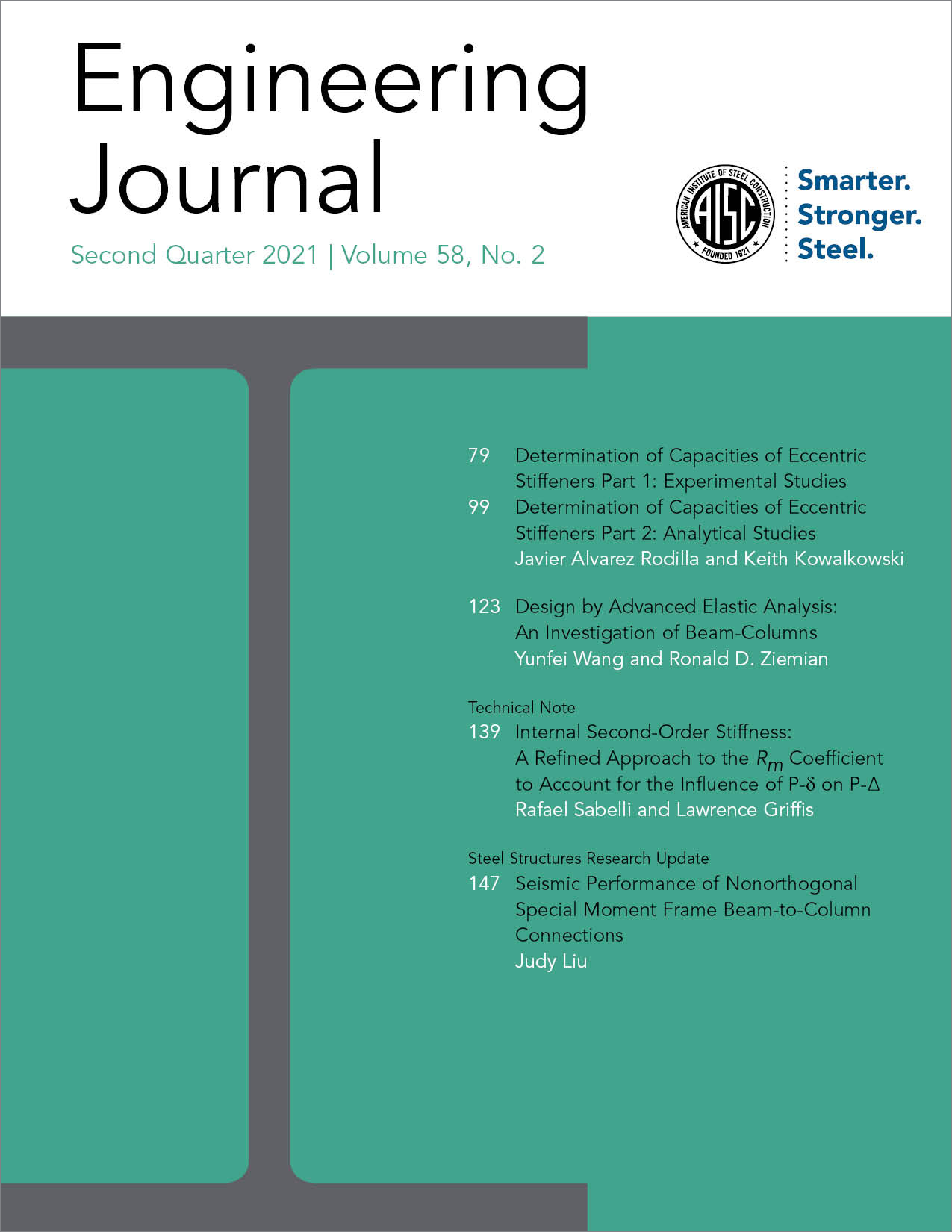Technical Note: Internal Second-Order Stiffness: A Refined Approach to the Rm Coefficient to Account for the Influence of P-? on P-?
DOI:
https://doi.org/10.62913/engj.v58i2.1173Keywords:
second-order analysis, stabilityAbstract
One component of the B2 amplifier method of addressing second-order effects is the RM coefficient, which represents the influence of P-? on P-? effects. This paper presents the background for RM based on LeMessurier’s paper, “A Practical Method of Second-Order Analysis: Part 2—Rigid Frames,” (1977), and makes explicit the simplifications entailed in the AISC Specification for Structural Steel Buildings (AISC, 2016b) formulation for this coefficient. These simplifications, while providing for reliable strength design, can overestimate the P-? effect for typical building applications, especially if applied to drift. A simple formula for RM based on the work of LeMessurier permits a more precise estimate, which can be used as a component of both force and displacement amplifiers presented in this paper. This explicit approach to the RM coefficient provides the basis for clear presentation of the relationships first-order and second-order stiffness (both internal and external), including the distinct effects of P-? and P-? stiffness reductions on equilibrium at the second-order displacement.

